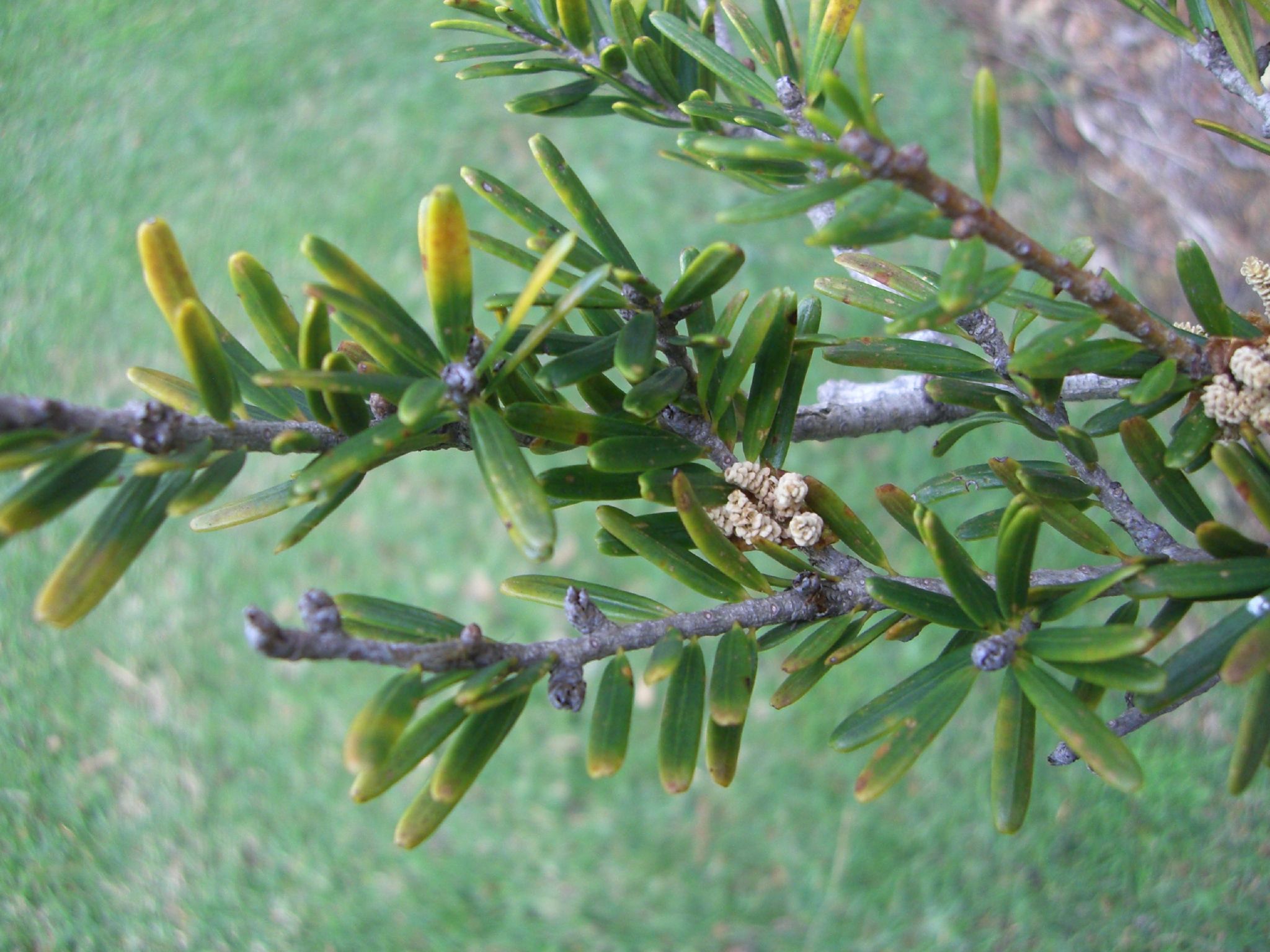
Commemorates French nurseryman J. B. Keteleer (1813-1903.)
Broad-crowned, tall, evergreen, trees. Branches horizontal, spreading. Buds with overlapping scales that form a conspicuous sheath at the base of the branchlet. Shoots more or less hairless. Leaves linear, leathery, spirally arranged but twisted to form two ranks on the shoot; leaving a circular scar when they fall, as in Abies. The upper and lower surfaces have prominent midribs; on the upper surface the midrib is set in a longitudinal groove. Cones of both sexes are borne on the same tree. Male cones axillary or terminal in clusters of 5-10, stalked and with scaly bracts at the base, Aug-Nov. Female cones erect on the branches, ripening in the first year, scales and bracts persistent.
Well suited to the Australian climate but rarely grown; may be coppiced. Keteleeria evelyniana Mast. has been offered in specialist nurseries.
3 species growing in hot, dry areas of China and Taiwan at low elevation; cf. Abies. (The number of species is possibly an underestimate as 10 species are recognised by Chinese botanists).
Seed.
Resembling Abies in having leaves with a small circular basal attachment (but hardly disc-like as in Abies), but with cones that do not breaking up at maturity and are borne on short, leafy shoots; male cones in clusters; bud scales persisting as a sheath at the base of each branchlet.
Flous (1936), Farjon (1989).
Source: (1995). Pinaceae. In: . Horticultural Flora of South-eastern Australia. Volume 1, Ferns, conifers & their allies. The identification of garden and cultivated plants. University of New South Wales Press.
